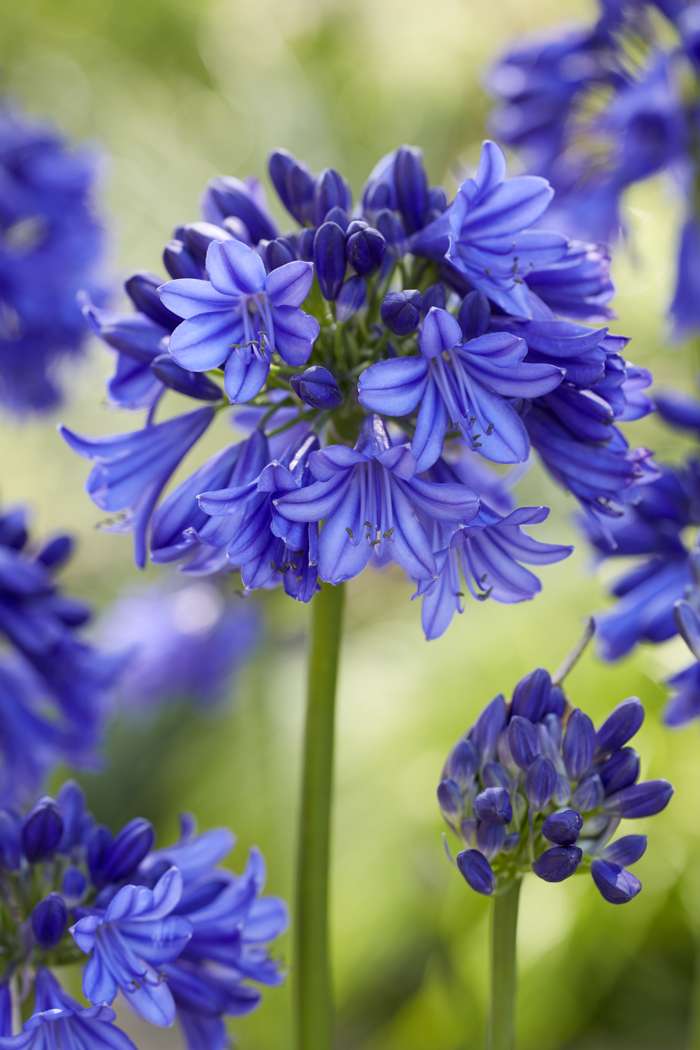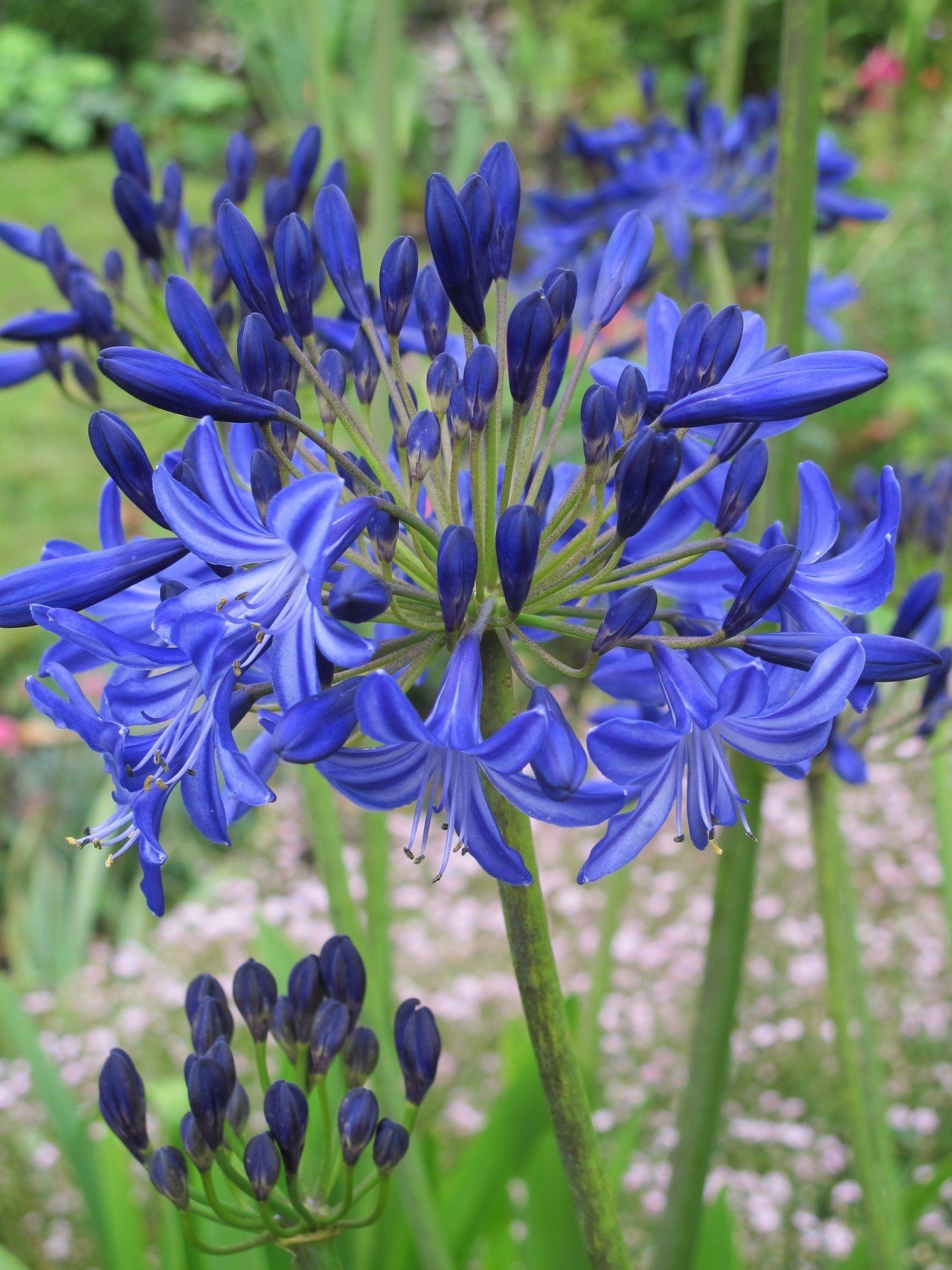Agapanthus Growing Problems: Soil, Sunshine, and Watering
Agapanthus Growing Problems: Soil, Sunshine, and Watering
Blog Article
Letting Loose the Secret to Effective Agapanthus Cultivation: Advice for a Flourishing Yard
In the realm of gardening, cultivating agapanthus successfully requires a tactical technique that incorporates different facets of plant treatment. By comprehending the nuances of agapanthus growing, one can develop an environment where these plants grow and grow perfectly.
Planting Agapanthus: Best Practices
When planting Agapanthus, proper soil prep work is essential for guaranteeing effective development and development of these lovely flowers. Agapanthus, commonly known as Lily of the Nile or African lily, grows in well-draining dirt with a slightly acidic to neutral pH level - Agapanthus. Prior to planting, it is crucial to modify heavy clay soils with raw material such as compost or peat moss to improve drainage and give crucial nutrients for the plants
To grow Agapanthus, pick an area that receives full sunlight to partial color, as this will certainly promote healthy and balanced development and plentiful flowering. Dig a hole twice the diameter of the plant's root ball and position the Agapanthus at the exact same depth it was formerly growing. Carefully backfill the hole with soil, pressing down firmly to eliminate any kind of air pockets around the origins.
Water the freshly planted Agapanthus thoroughly and remain to maintain the soil equally wet, specifically during the plant's active growing period. Agapanthus. Using a well balanced fertilizer once a month can additionally sustain the plant's growth and flowering. By complying with these ideal methods for planting Agapanthus, you can produce a sensational display screen of these captivating flowers in your yard
Suitable Dirt Conditions for Agapanthus
For ideal development and blooming success of Agapanthus plants, guaranteeing the soil conditions are suitable is important. Agapanthus grows in well-draining dirt with a slightly acidic to neutral pH degree ranging from 6.0 to 7.0. This kind of dirt permits ample water drain, stopping waterlogging which can result in root rot. To enhance dirt water drainage, take into consideration including raw material such as garden compost or peat moss when preparing the growing website. In addition, Agapanthus likes soil that is rich in nutrients, so including a well balanced fertilizer throughout the expanding period can advertise healthy development and vivid blossoms.

Watering and Feeding Tips
To make sure healthy and balanced development and lively flowers, proper watering and feeding methods are important for effective Agapanthus cultivation. Agapanthus plants profit from routine watering, particularly throughout the expanding period.
When it involves feeding Agapanthus, a balanced fertilizer with equivalent parts nitrogen, phosphorus, and potassium can be used in the spring to promote healthy growth and flowering. Slow-release fertilizers are perfect for supplying nutrients progressively over an extensive duration. Prevent over-fertilizing, as this can cause excessive foliage growth at the expense of blooms.
In addition, incorporating organic matter like garden compost into the soil can boost nutrient levels and enhance dirt structure, helping in the general wellness of the Agapanthus plants. By following these watering and fertilizing suggestions, gardeners can guarantee their Agapanthus plants grow and create spectacular displays of flowers.
Trimming and Deadheading Strategies
Proper trimming and deadheading strategies play an important role in maintaining the wellness and looks of Agapanthus plants, enhancing the crucial methods of watering and feeding for effective growing. Pruning Agapanthus entails removing spent blossom heads, yellowing or dead leaves, and total shaping of the plant to advertise much better growth. Deadheading, the process of eliminating discolored flowers, not just boosts the plant's look but additionally encourages additional blooming.
When deadheading Agapanthus, it is advisable to clip off the flower stem at the base see this site making use of sharp, clean shears. This process reroutes the plant's power from seed production back into root and vegetation development, promoting a healthier and a lot more robust plant. Normal deadheading can extend the flowering duration of Agapanthus and avoid self-seeding, which can result in congestion.
In regards to trimming, Agapanthus normally gain from a light trim after blooming to clean up the plant and motivate fresh growth. Cutting down the invested flower stems and getting rid of any kind of broken or dead vegetation aids keep the plant's vitality and general look. Nonetheless, it is essential to avoid cutting right into the crown of the plant, as this can compromise its health.

Protecting Agapanthus From Pests and Diseases
Carrying out effective pest and condition management methods is essential to guarding the wellness and vigor of Agapanthus plants in farming. One usual parasite that affects Agapanthus is the Agapanthus borer, a caterpillar that passages right into the plant, triggering damages to the fallen leaves and flowers.
In addition to bugs, Agapanthus are prone to illness such as root rot and fungal leaf places. These issues can usually be avoided by guaranteeing proper water drainage and preventing overwatering. If indications click here now of condition show up, influenced parts of the plant need to be quickly removed to protect against more spread. Fungicides might additionally be used as a treatment measure, following the manufacturer's directions meticulously. By staying attentive and addressing parasite and illness issues promptly, gardeners can help their Agapanthus prosper and thrive.

Final Thought
Finally, effective cultivation of agapanthus requires correct planting strategies, ideal dirt conditions, ample watering and fertilizing, normal trimming and deadheading, and security from bugs and diseases. By following these methods and ideas, gardeners can guarantee a flourishing yard filled up with attractive agapanthus blossoms. Agapanthus. Remember to maintain constant care and interest to detail to advertise the wellness and longevity of these magnificent plants
When growing Agapanthus, correct soil prep work is vital for making sure successful growth and advancement of these lovely blossoms.Water the newly planted Agapanthus extensively and continue to maintain the soil equally damp, specifically during the plant's active growing period.For optimum growth and visit here growing success of Agapanthus plants, ensuring the soil problems are excellent is essential. When transplanting or growing Agapanthus, guarantee the soil is well-prepared to supply the necessary structure for the plants to develop themselves effectively. One usual pest that influences Agapanthus is the Agapanthus borer, a caterpillar that passages into the plant, creating damages to the blossoms and leaves.
Report this page